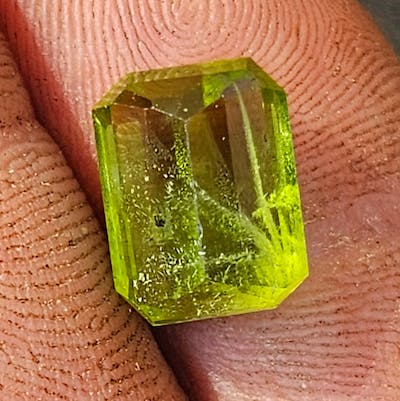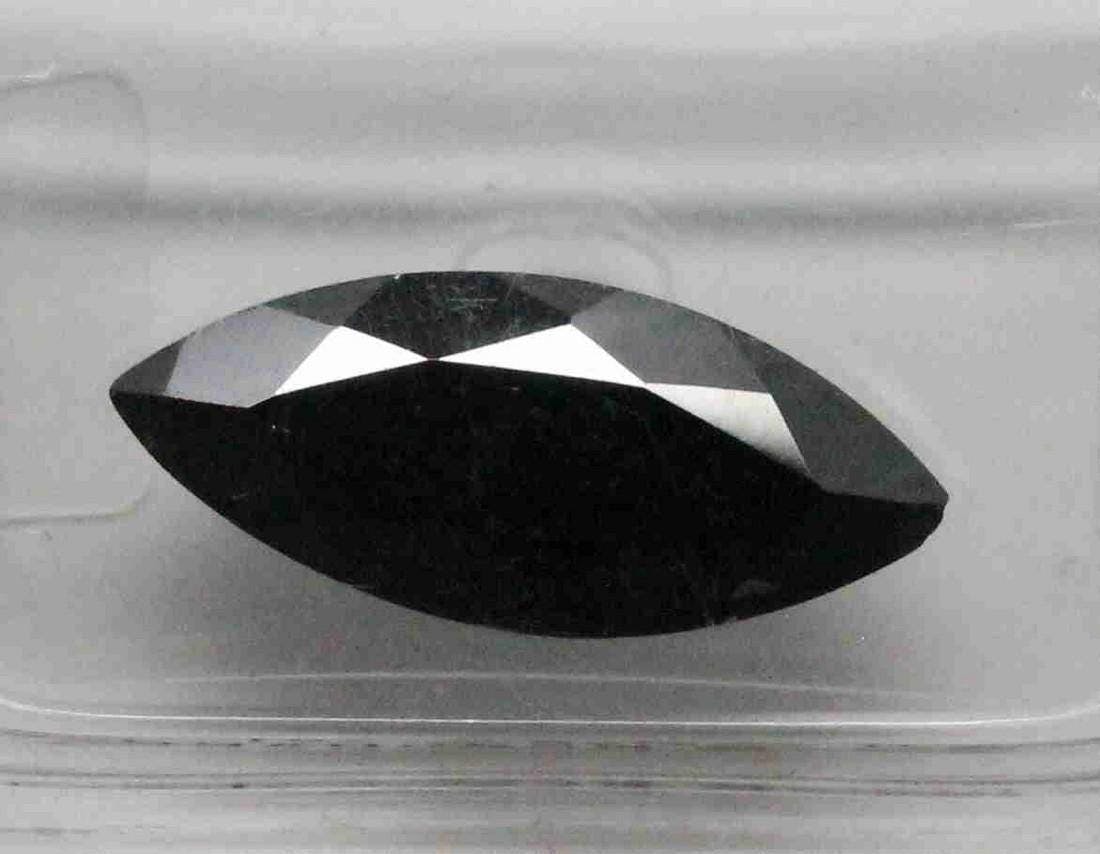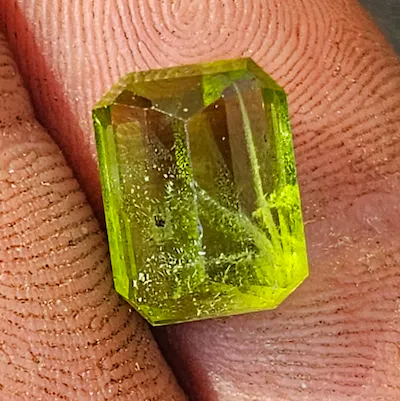News
The Rarity and Value of Red Beryl
Imagine owning a precious gemstone that is as rare as it is breathtakingly beautiful. That is the allure of red beryl, a gemstone that exudes elegance and exclusivity. While beryl is already well-known for its range of colors, such as emerald and aquamarine, red beryl stands out for its scarcity and high price. This intriguing gem can vary from colorless to black, but it is the vibrant and striking red specimens that capture the attention of collectors and connoisseurs alike. With clarity being the most valuable attribute of beryls, closely followed by color, it is no wonder that these gems can fetch a hefty sum. Found in granite rocks and other geological formations worldwide, red beryl is a true rarity that commands attention and adoration. However, with its unique beauty comes the need for delicate care and discernment, as synthetic beryls and enhancements can attempt to mimic their natural counterparts. So, whether you are an avid gemstone enthusiast or simply intrigued by the world of precious stones, the rarity and value of red beryl is a subject that is sure to captivate your imagination.

The Rarity of Red Beryl
Red beryl, also known as bixbite or red emerald, is an incredibly rare and highly sought-after gemstone. It belongs to the beryl family, which includes other well-known and popular varieties such as emerald and aquamarine. However, unlike its more common relatives, red beryl is exceptionally rare and expensive, making it a true gemstone rarity.
Definition and Characteristics of Red Beryl
Red beryl is a variety of beryl that is prized for its vibrant red color. It gets its stunning hue from traces of manganese and iron in its crystal lattice structure. The gemstone usually exhibits a range of red shades, from a deep, rich raspberry color to a lighter pinkish-red hue. Its intense color saturation and outstanding clarity are what make it so valuable and highly coveted by collectors and gem enthusiasts alike.
Formation and Distribution of Red Beryl
Red beryl is formed under extremely unique and specific geological conditions. It is typically found in certain pegmatite dikes and miarolitic cavities, which are rare and peculiar geological formations. These formations occur in highly evolved, low-potassium, granitic rocks. Red beryl crystals are often found alongside other minerals such as topaz, quartz, and spessartine garnet.
The distribution of red beryl is extremely limited, with only a few known locations worldwide. The most significant source of red beryl is the Wah Wah Mountains in Utah, USA. This mine produces some of the finest quality red beryl specimens in the world. Other notable sources include countries like Mexico, Brazil, and Russia, although their production is quite limited.
Comparison to Other Beryl Varieties
When comparing red beryl to other beryl varieties such as emerald and aquamarine, the differences are striking. While emerald and aquamarine are relatively common and widely available, red beryl is exceptionally rare. In terms of color, red beryl stands out with its intense and vibrant red hues, while emerald possesses a rich green color and aquamarine showcases a beautiful blue to blue-green color.
In terms of value, red beryl is considered one of the most valuable and sought-after gemstones. Factors such as color, clarity, and size greatly influence its value. Red beryl’s rarity and distinctiveness make it a highly desirable gemstone for collectors and investors alike.
The Value of Red Beryl
The value of red beryl is determined by various factors, including its rarity, color, clarity, and size. Understanding these factors can help you appreciate the true worth of this exquisite gemstone.
Factors Influencing Value
When it comes to red beryl, clarity is paramount. Gemstones with high transparency and minimal inclusions are considered the most valuable. In terms of color, the richness and intensity of red beryl’s red hue greatly impact its value. The more vivid and saturated the red color, the more valuable the gemstone becomes.
Size also plays a crucial role in determining the value of red beryl. Larger, well-cut specimens are rarer and more valuable than smaller ones. Additionally, the overall market demand and rarity of red beryl also contribute to its value.
Historical Significance and Demand
Red beryl has a relatively short history compared to other gemstones. Its first discovery dates back to the late 19th century in Utah, USA. Since then, red beryl has captured the attention of gem enthusiasts and collectors worldwide. Its scarcity and unique color have made it a highly sought-after gemstone.
The demand for red beryl continues to grow as collectors and investors recognize its rarity and beauty. Red beryl’s limited availability further drives its appeal and value in the market.
Pricing and Market Trends
Due to its rarity, red beryl commands high prices in the market. The cost per carat can vary significantly based on the gemstone’s quality and size. On average, red beryl can range from several hundred to several thousand dollars per carat, with exceptional specimens commanding even higher prices.
Market trends for red beryl fluctuate based on various factors, including supply and demand dynamics, consumer preferences, and economic conditions. However, the overall trend reflects a steady increase in both interest and value for this scarce gemstone.
Characteristics of Beryl Gemstones
Beryl is a versatile gemstone, with a wide range of colors and characteristics. Understanding the key features of beryl gemstones can help you appreciate their unique beauty and value.
Overview of Beryl Gemstones
Beryl is a mineral species that belongs to the larger silicate group. It consists of beryllium aluminum cyclosilicate and exhibits varying colors due to trace elements within its crystal structure. The most well-known beryl varieties include emerald (green), aquamarine (blue to blue-green), and morganite (pink).
Color Range and Intensity
Beryl gemstones come in a diverse array of colors, ranging from colorless to black. Each variety of beryl exhibits its own distinct hue, with green being the most famous color associated with beryl in the form of emerald. Aquamarine showcases beautiful shades of blue and blue-green, while red beryl stands out with its rare and vibrant red hues.
The intensity of color in beryl gemstones is determined by factors such as the presence of trace elements and the crystal’s quality. Deeply saturated colors are highly desirable and fetch higher values in the market.
Clarity and Inclusions
Clarity is an essential characteristic of beryl gemstones. The presence of inclusions, or internal flaws, can impact a gemstone’s transparency and overall appeal. Inclusions in beryl gems can present as liquid-filled cavities, fractures, or needle-like crystals.
While emerald, in particular, is known for its inclusion characteristics, other beryl varieties such as aquamarine and red beryl can exhibit excellent clarity. Gemstones with minimal inclusions and high transparency are considered more valuable.
Cut and Shape
The cut and shape of a beryl gemstone greatly influence its brilliance and overall appearance. Beryl gemstones are often cut into various shapes, including traditional cuts such as oval, round, and emerald-cut, as well as more unique and custom shapes.
A well-executed cut enhances a beryl gemstone’s color, clarity, and brilliance. It allows the gemstone to reflect and refract light optimally, resulting in a stunning display of its natural beauty.
Sources and Mining of Beryls
Beryls are found worldwide, with various regions serving as significant sources of these exquisite gemstones. Understanding the global distribution, geological formation, and mining techniques provides valuable insights into the journey of beryl gemstones from the earth to the market.
Global Distribution of Beryls
Beryls can be found in many countries across the globe. Major beryl-producing regions include Brazil, Colombia, Zambia, Madagascar, Mozambique, Afghanistan, and the United States. Each region’s unique geological conditions contribute to the occurrence and availability of beryl deposits.
Beryls are often found in granite rocks, especially granite pegmatites. These coarse-grained igneous rocks provide the ideal environment for the formation and growth of beryl crystals. Other geological formations such as hydrothermal veins and alluvial deposits can also yield beryl gemstones.
Geological Formation and Mines
Beryl gemstones form through a combination of geological processes and favorable conditions. They are typically formed in pegmatite dikes, which are coarse-grained igneous intrusions that form deep within the Earth’s crust. These intrusions often contain high concentrations of rare elements, including beryllium, which is crucial for beryl formation.
Mining operations for beryls are conducted in regions with significant beryl deposits. Mining techniques vary depending on the location and the specific geological conditions. In some cases, open-pit mining is used to extract beryl gemstones, while in others, underground mining methods are employed.
Extraction and Mining Techniques
The extraction of beryl gemstones involves careful exploration, planning, and extraction techniques. Geologists and mining engineers conduct extensive surveys and assessments to identify potential beryl deposits.
Once a promising deposit is identified, mining operations may begin. Extraction techniques can vary, but typically involve drilling, blasting, and heavy machinery to extract the beryl-bearing rocks. The extracted materials are then processed to separate the beryl gemstones from other minerals and impurities.
It is important to note that responsible and sustainable mining practices are essential to minimize environmental impact and ensure the longevity of beryl deposits.
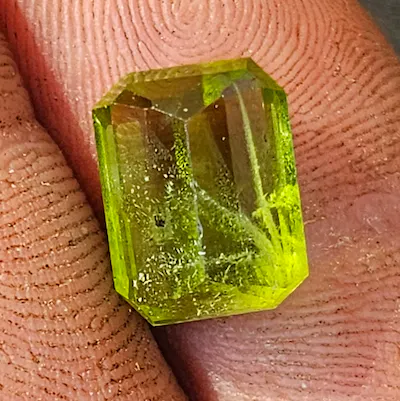
Enhancements and Treatments of Beryls
Gemstone enhancements and treatments have been practiced for centuries to improve the appearance and marketability of gemstones, including beryls. Understanding the common enhancement methods employed in the gem trade can help you appreciate the range of possibilities and considerations when it comes to beryl gemstones.
Overview of Enhancements
Enhancements are techniques used to alter or improve a gemstone’s appearance. They can involve various treatments such as heat, irradiation, and coating. While enhancements can enhance a gemstone’s color, clarity, or durability, it is essential for consumers to be aware of these treatments.
Heating and Irradiation
Heating is one of the most common enhancement methods used with beryl gemstones. Heat treatment is often employed to improve clarity and enhance color. For example, heating can remove or reduce the visibility of certain inclusions in emeralds, resulting in a more desirable appearance.
Irradiation is another treatment method used with beryl gemstones. It involves exposing the gemstone to controlled levels of radiation to enhance or alter its color. Irradiation can produce various color effects, such as the blue in blue-green aquamarine or the green in some yellow beryl.
Other Common Treatments
In addition to heating and irradiation, beryl gemstones may undergo other treatments to improve their appearance and marketability. Such treatments can include surface coatings, fracture filling, and oiling. These treatments are aimed at enhancing a gemstone’s clarity or improving its overall visual appeal.
It is important to note that disclosure of any treatments or enhancements is essential when buying or selling beryl gemstones. Transparency and accurate information ensure that consumers can make informed decisions and understand the true nature of the gemstone they are acquiring.
Care and Maintenance of Beryls
Proper care and maintenance are crucial to preserving the beauty and value of beryl gemstones. With their varying degrees of hardness and susceptibility to damage, it is important to handle and clean beryl gemstones with care.
Handling and Storage Precautions
When handling beryl gemstones, it is advisable to minimize contact with harsh chemicals, oils, and lotions, as they can potentially damage the gemstone’s surface. It is also essential to avoid subjecting beryl gemstones to extreme heat or temperature changes, as they can cause thermal shock and result in cracks or fractures.
For storage, it is best to keep beryl gemstones separate from other gemstones to prevent potential scratching or damage. A soft cloth or a padded box can be used to protect the gemstone from external forces.
Cleaning Methods for Beryl Gemstones
To clean beryl gemstones, mild soapy water and a soft brush can be used. Gently scrub the gemstone with a soft brush to remove any dirt or debris. Rinse the gemstone thoroughly with clean water and pat it dry with a soft cloth.
Avoid ultrasonic cleaners or steam cleaners for beryl gemstones, as the high-intensity vibrations or heat can potentially damage the gemstone. Chemical cleaners should also be avoided unless specifically recommended by a professional gemologist.
Common Issues and Solutions
Beryl gemstones, particularly emeralds, can be susceptible to chipping, cracking, or scratching due to their relatively lower hardness compared to other gemstones. If damage occurs, it is advisable to consult a professional gemologist or jeweler who specializes in gemstone repair.
In the case of emeralds, it is not uncommon for traditional emerald oils to deteriorate over time. Re-oiling or re-treating the gemstone may be necessary to maintain its appearance and enhance its durability. It is important to consult a reputable gemologist or jeweler for guidance on appropriate treatments for specific gemstones.
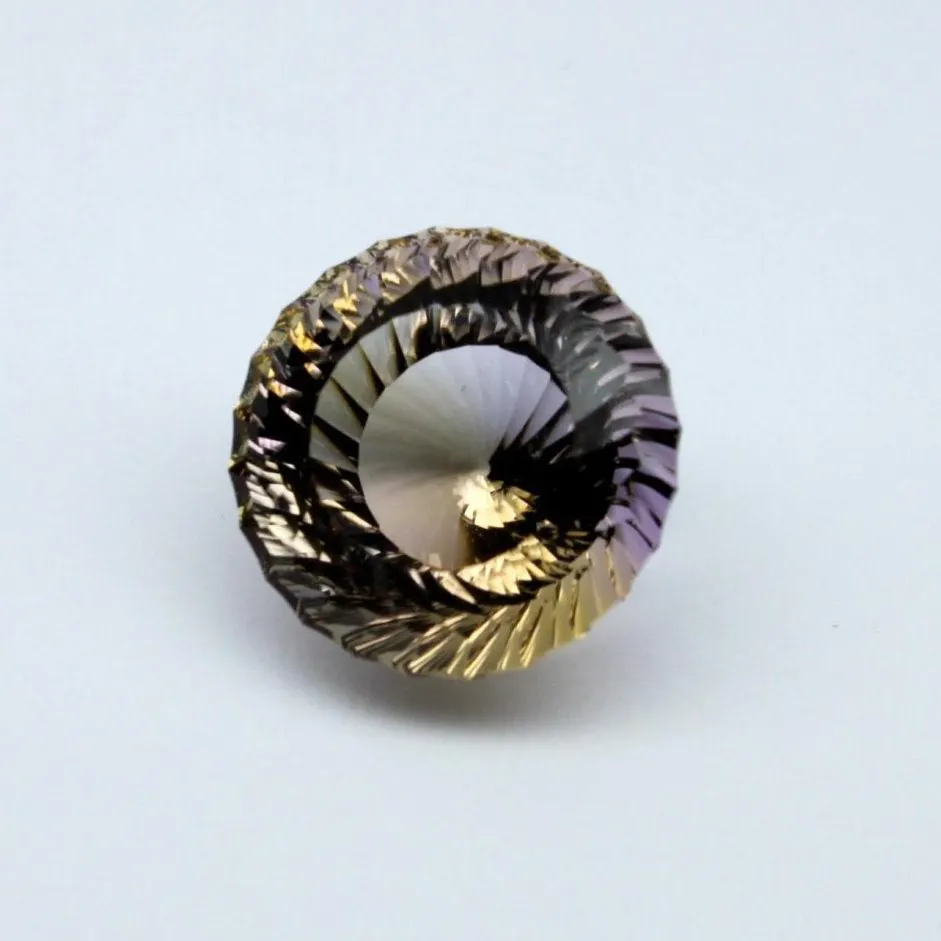
Distinguishing Natural Beryls from Synthetics
As with many gemstones, the market for beryls includes both natural and synthetic options. Distinguishing between the two is crucial for maintaining the integrity and value of natural beryl gemstones.
Synthetic Beryls and Their Production
Synthetic beryls, also known as lab-created or man-made gemstones, are produced through a process that replicates the natural conditions necessary for beryl formation. By utilizing advanced technology, scientists can create synthetic beryls that have similar chemical and physical properties to their natural counterparts.
Synthetic beryls are typically grown in a laboratory setting using hydrothermal or flux methods. These methods involve creating the ideal conditions for beryl crystal growth, resulting in gems that closely resemble natural beryls.
Methods of Differentiation
Several methods can be employed to differentiate between natural and synthetic beryls. Gemological laboratories and experienced gemologists often utilize specialized instruments and techniques to determine a gemstone’s origin.
Examination under a microscope can reveal characteristic growth patterns and inclusions that are indicative of natural beryls. Additionally, gemological tests such as spectroscopy, refractometry, and specific gravity measurement can help determine whether a beryl gemstone is natural or synthetic.
Testing and Certification
To ensure the authenticity and value of a beryl gemstone, it is advisable to seek certification from reputable gemological laboratories or qualified gemologists. These professionals can provide detailed reports that confirm a gemstone’s origin, authenticity, and any treatments or enhancements it may have undergone.
Certification is especially important when buying or selling high-value beryl gemstones, as it increases buyer confidence and helps establish the gemstone’s market value.
Famous Red Beryl Specimens
Throughout history, several notable red beryl specimens and gems have captivated gem enthusiasts and collectors worldwide. These exceptional examples showcase the beauty, rarity, and desirability of red beryl.
Notable Red Beryl Discoveries
The Wah Wah Mountains in Utah, USA, have been an important source of red beryl since its discovery in the late 19th century. This region continues to produce some of the finest quality red beryl specimens in the world. Other notable red beryl discoveries have been made in Mexico, Brazil, and Russia, although on a smaller scale.
One of the most significant red beryl specimens is the “Red Beryl Mona Lisa.” This extraordinary gemstone, weighing approximately 4.5 carats, is renowned for its exceptional color and clarity. It is considered one of the finest red beryl specimens ever discovered.
World Renowned Red Beryl Gems
The world of red beryl gemstones boasts several renowned gems that have gained international recognition for their beauty and rarity. One such gem is the “P49 Unnamed Red Emerald” from the Ruby Violet claim in Utah. This stunning gemstone weighing approximately 11.8 carats exemplifies the mesmerizing deep red hue that red beryl is known for.
Another noteworthy red beryl gemstone is the “Red Beryl of Maynard Bixby,” a captivating gem weighing approximately 5.5 carats. Its impeccable clarity and intense raspberry-red color set it apart as a truly exceptional red beryl specimen.
Legendary Red Beryl Jewelry
Red beryl gemstones have been used in exquisite jewelry creations throughout history. These captivating gemstones have adorned pieces ranging from delicate earrings to statement-making necklaces.
One legendary piece featuring red beryl is the “Red Beryl Tiara.” This intricate tiara showcases a stunning arrangement of red beryl gemstones set in a breathtaking design that celebrates the unique beauty of these rare gems. Another notable red beryl jewelry piece is the “Red Beryl Ring of Royalty,” a regal creation adorned with a brilliant red beryl gemstone.

Collecting and Investing in Red Beryl
For collectors and investors who recognize the value and rarity of red beryl, acquiring these exceptional gemstones can be a rewarding endeavor. However, there are certain considerations that should be taken into account when collecting or investing in red beryl.
Considerations for Collectors
Collecting red beryl requires an appreciation for its rarity and a passion for its unique beauty. As red beryl is exceptionally rare, finding high-quality specimens can be challenging. Collectors should focus on acquiring gemstones with exceptional color, clarity, and size, as these factors significantly impact the value and desirability of a red beryl.
Additionally, it is advisable for collectors to seek gemstones with proper documentation, such as certificates from reputable gemological laboratories or qualified gemologists. These documents help establish the authenticity and value of the gemstone.
Investment Potential and Risks
Investing in red beryl can be an attractive option for those seeking to diversify their investment portfolios. Red beryl’s rarity and desirability contribute to its potential as a long-term investment. As with any investment, it is important to consider market trends, supply and demand dynamics, and economic factors when assessing the potential returns and risks associated with investing in red beryl.
It is worth noting that the gemstone market can be subject to fluctuations and various external factors that can impact the value of red beryl. Therefore, thorough research, expert advice, and prudent decision-making are crucial when considering red beryl as an investment.
Authentication and Valuation
When investing in red beryl, authentication and valuation are of utmost importance. Seeking certifications from reputable gemological laboratories or qualified gemologists is essential to establish the authenticity and quality of the gemstone. These certifications also provide valuable information that can assist in determining the gemstone’s market value.
Professional appraisal services can provide detailed assessments of red beryl gemstones, taking into consideration factors such as size, color, clarity, and overall condition. These appraisals serve as a reliable guide for understanding the gemstone’s value and market potential.
Future Prospects for Red Beryl
The future prospects for red beryl are influenced by various factors, including trends in demand and supply, exploration efforts, and market outlook. Understanding these aspects can provide insights into the potential trajectory of red beryl in the gemstone industry.
Trends in Demand and Supply
The demand for red beryl continues to grow as collectors, investors, and gem enthusiasts recognize its rarity and unique beauty. As the market becomes increasingly educated about red beryl and its limited availability, the demand is expected to rise. This demand is further fueled by a desire for exclusive and extraordinary gemstones that stand out from more common options.
However, the supply of red beryl remains extremely limited due to its rarity and specific geological conditions for formation. The scarcity of red beryl contributes to its high value and makes it even more coveted among gemstone enthusiasts.
Exploration and New Discoveries
Given the limited known sources of red beryl, exploration efforts to discover new deposits play a crucial role in the future supply of this gemstone. Geologists and mining companies continue to explore potential regions, hoping to uncover new sources of high-quality red beryl.
Exploration efforts rely on advancements in technology, geologic expertise, and a comprehensive understanding of the geological conditions necessary for red beryl formation. These advancements have the potential to lead to new discoveries and potentially increase the supply of red beryl in the future.
Market Outlook and Price Predictions
The market outlook for red beryl remains positive due to its rarity and increasing demand. The gemstone’s unique characteristics and limited supply contribute to its value and desirability among collectors and investors.
Price predictions for red beryl can be challenging due to market fluctuations and various external factors that can impact gemstone prices. However, the consensus among experts in the industry suggests that red beryl will continue to appreciate in value over time, making it an attractive option for long-term investments.
In conclusion, red beryl is a gemstone rarity that offers exceptional beauty, value, and investment potential. Its vibrant red color, scarcity, and unique characteristics make it highly sought-after by collectors and gem enthusiasts worldwide. Understanding the rarity, value, care, and market dynamics of red beryl can help individuals make informed decisions when acquiring, collecting, or investing in this extraordinary gemstone.


